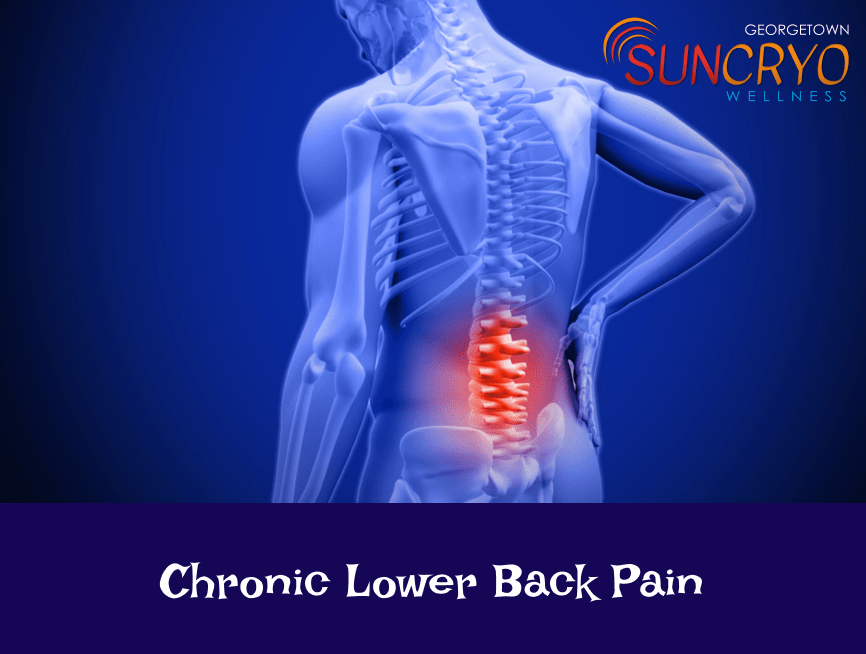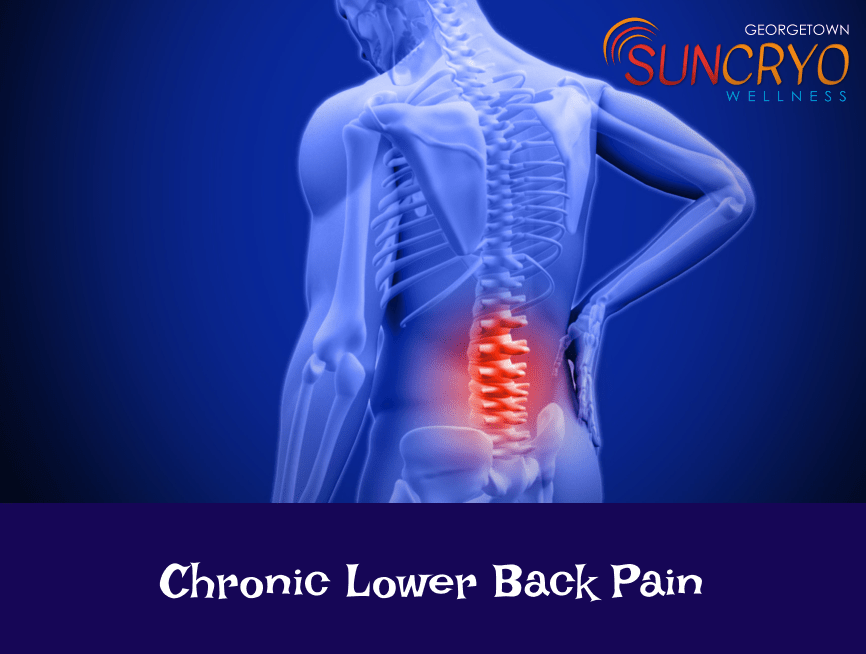Chronic Lower Back Pain

Persistent lower back pain often leads to significant discomfort and can substantially impact your daily life. Managing this persistent and intrusive pain necessitates a thorough comprehension of its underlying causes. Moreover, the continual experience of chronic lower back pain can result in various mental effects for individuals dealing with it regularly. This article will delve into the causes of chronic lower back pain and offer insights into home-based treatments for its management.
Distinguishing between Acute and Chronic Lower Back Pain Lower back pain manifests in two main forms
Acute lower back pain
This type of pain occurs suddenly and is usually short-lived, causing discomfort in the lower part of the spine. It commonly arises from a specific incident, such as lifting a heavy object incorrectly or making a sudden, awkward movement.
Chronic lower back pain
Characterized by persistent discomfort or pain lasting for three months or more, chronic lower back pain differs from acute pain. Unlike acute pain, it isn’t always linked to a specific injury.
Reasons behind persistent lower back pain can vary, including:
Degenerative Conditions
These encompass a spectrum from herniated discs to osteoarthritis. Such conditions prompt the breakdown of bodily tissues, resulting in enduring discomfort in the lower back.
Muscle and Ligament Problems
Strained muscles often contribute to pain. Prolonged heavy lifting, for instance, can lead to damage in the lower back muscles. Additionally, sprains in the lower back ligaments can also be a source of lower back pain.
Lifestyle Influences
Chronic lower back pain can be attributed to factors such as poor posture or non-ergonomic work setups. Lifestyle-related conditions like obesity may also exacerbate lower back discomfort due to added strain on those muscles.
These triggers of chronic lower back pain persist over time, impacting an individual’s functionality and causing ongoing distress. Addressing these root causes is crucial in reinstating a person’s quality of life. Before commencing any new treatment, it’s advisable to consult your doctor to ensure its safety and rule out any underlying injuries that might potentially worsen with a new regimen.
Treatment options for chronic lower back pain encompass various approaches that directly address its underlying causes. Here is a rundown of the most prevalent choices:
Exploring Diverse Exercise Regimens and Equipment
Engaging in specific exercises and utilizing related equipment can aid in managing chronic lower back pain. Consider the following options:
Exercises and stretches
Targeted stretches focusing on the lower back can effectively rehabilitate muscles and ligaments, alleviating persistent back pain.
Foam rollers and massage guns
While helpful in relieving back pain, these tools might pose challenges in certain scenarios due to their usage complexity.
Massage chairs and lumbar support
Utilizing massage chairs can be advantageous for managing chronic pain by providing targeted massages and lumbar heat therapy.
Collaborating with Health Care Professionals
Managing chronic lower back pain often involves seeking assistance from healthcare professionals who can offer various remedies for relief. Below are several options among healthcare professionals that may aid in addressing your pain:
Massage therapy
Employing a massage therapist can bring relief to lower back pain; however, it might be costly or inconvenient if done frequently. An alternative includes learning back massage techniques that can be self-administered or performed with the assistance of another individual.
Chiropractic care
Seeking help from a chiropractor can assist with lower back pain, but addressing this issue typically requires a sustained commitment, necessitating regular visits to the chiropractic clinic.
Medical or Surgical Interventions
If natural remedies prove ineffective, your healthcare provider might propose more invasive measures for lower back pain, such as:
Injections and surgery
Invasive procedures like epidural injections or surgery might be recommended for severe lower back pain when other treatments have not yielded results. These treatment options for chronic pain are particularly beneficial for individuals who have identified specific causes contributing to their lower back pain. Implementing lifestyle improvements can also aid those coping with the prolonged effects of lower back pain.
Improving Your Lifestyle to Manage Chronic Lower Back Pain
Chronic lower back pain often stems from daily activities that trigger discomfort. Addressing these triggers is crucial to prevent prolonged discomfort. Consider these lifestyle adjustments:
Master Safe Lifting: Learn proper techniques to avoid straining your lower back during daily tasks.
Prioritize Posture: Enhance sitting, standing, and walking posture to alleviate chronic pain caused by poor alignment.
Embrace Exercise: Engage in low-impact activities like swimming or walking to strengthen core muscles and support your lower back.
Hydration and Nutrition: Stay hydrated and maintain a balanced diet to support spinal health and reduce inflammation.
Manage Stress: Use stress-relief methods like yoga or meditation, as stress contributes to muscle tension and chronic pain.
Routine Check-ups: Regularly consult a healthcare provider to monitor spine health and address emerging issues.
Seek Support: Lean on friends and family for understanding and emotional well-being.
Ergonomic Adjustments: Modify workstations and home setups to encourage better posture and reduce back pain.
Weight Control: Maintain a healthy weight to reduce stress on your lower back.
Identifying and addressing these triggers is crucial for relief. Additionally, when conventional methods like exercise or professional guidance don’t suffice, investing in a massage chair might offer immediate relief for some individuals. However, any decision should align with your condition and medical recommendations.
Managing Chronic Lower Back Pain
Dealing with chronic lower back pain isn’t straightforward—it might result from various factors. Regular checkups and treatment plans can alleviate or provide temporary relief. When traditional options fall short, exploring alternatives like a massage chair could offer immediate comfort for certain individuals.
It’s crucial to tailor your approach based on your current condition and in consultation with medical professionals.
